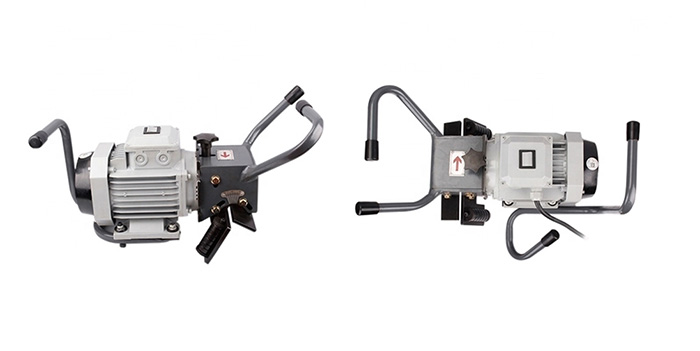Operating Procedures of Chamfering Machines
Chamfering machines are an essential tool for achieving a clean and polished finish on metal and other materials. However, improper use can lead to accidents, equipment damage, and subpar results. That's why it's crucial to follow proper operating procedures when using a chamfering machine. Here are some guidelines to follow when operating a chamfering machine.

Operators of chamfering machines should be familiar with the structure, performance, and operation steps of this machine.
Do these carefully before work:
- Read the shift record carefully to understand the work situation of the previous shift.
- Check whether the equipment and the work site are cleaned and wiped clean. There should be no obstacles, impurities, or new scratches, grinding, or collisions on the equipment bed, working table, guide rails, and other major sliding surfaces. If any of the above situations exist, they must be cleared and the equipment must be wiped clean. If there are new scratches, grinding, or collisions, the equipment operator should be asked to inspect them together and make a record.
- Check the handles, valves, rods, and main parts and components (sliders, hammers, tool holders, etc.) of each operating mechanism should be placed in the non-working position specified in the manual.
- Check that each safety protection device (protective cover, limit switch, limit gear iron, electrical grounding, safety device, etc.) should be complete and intact, and the installation should be correct and reliable. The door covers of the distribution box (box), fuel tank (pool), and gearbox should be closed.
- Check that the amount of oil in the lubrication parts (oil pool, oil tank, oil cup guide rail, and other sliding surfaces) should be sufficient, and add oil according to the lubrication instruction chart.
- Check the main parts, components, and fasteners for abnormal looseness.
- Open the gas (steam) circuit valve, check that the pipeline valve and other devices should be intact and leak-free, the gas (steam) pressure should comply with the regulations, and discharge the stagnant water in the pipe.
- Conduct an aerial test run, starting with a small movement. Check that all operating devices, safety devices (brakes, reversing, interlocks, limit switches, safety devices, etc.), and indicator devices (gauges, indicator lights, etc.) work sensitively, accurately, and reliably. All movements should be coordinated; the oil supply should be normal, and lubrication should be good. There should be no abnormal sounds, vibrations, the temperature rises, odors, smoke, or other phenomena during the operation of the machine. Only when everything is confirmed to be normal can work begin. For equipment that operates continuously, the personnel on the shift should jointly inspect and hand over the equipment in accordance with the above regulations; for equipment that is handed over after a shift interval, if a serious violation of the operating procedures is found in the previous shift, the equipment operator or team leader should be asked to check it continuously and record it. After adjustment or maintenance of the equipment, the operator must also inspect the equipment in accordance with the above requirements and steps to ensure that everything is correct before starting work.
Do these conscientiously at work:
- Stick to your job, carefully operate equipment, and do not do anything unrelated to work. When leaving the equipment due to accidents, stop the machine and turn off the electricity and gas (steam) sources.
- Use the equipment according to the technical specifications stipulated in the manual, and do not exceed the specifications or overload the equipment.
- Pay close attention to the lubrication of each part of the equipment, and refuel during shifts according to the lubrication instruction chart to ensure that all parts of the equipment are well lubricated.
- Pay close attention to the working conditions of all parts of the equipment, if there is abnormal sound, vibration, temperature rise, peculiar smell, smoke, uncoordinated movement, failure, and other phenomena, should be stopped immediately for inspection, and continue working after troubleshooting.
- When regulating speed, replacing molds, knives, or wiping and overhauling equipment, stop in advance and turn off electricity, and gas (steam) sources.
- When working, it is not allowed to disassemble the safety protection device and open the door cover of the distribution box, oil pool, and gearbox without authorization.
- If an accident occurs to the equipment, it must be shut down immediately, the site must be protected, and the relevant department should be reported to analyze and deal with it.
Do these carefully after work:
- All operating devices, sliders, hammerheads, tool holders, etc. should be placed in non-working positions according to the instructions; the electricity and gas (steam) sources should be turned off.
- Organize tools, parts, and worksites.
- Clean the material head, material edge, oxide skin, sundries, etc. on the work site and equipment; wipe and clean all parts of the equipment, and oil the sliding surface for protection.
- Fill in the shift record.
By following these procedures, you can ensure that your chamfering machine is used safely and effectively and that the resulting chamfers are of high quality. It's always a good idea to refer to the machine's user manual for specific instructions and safety guidelines.

